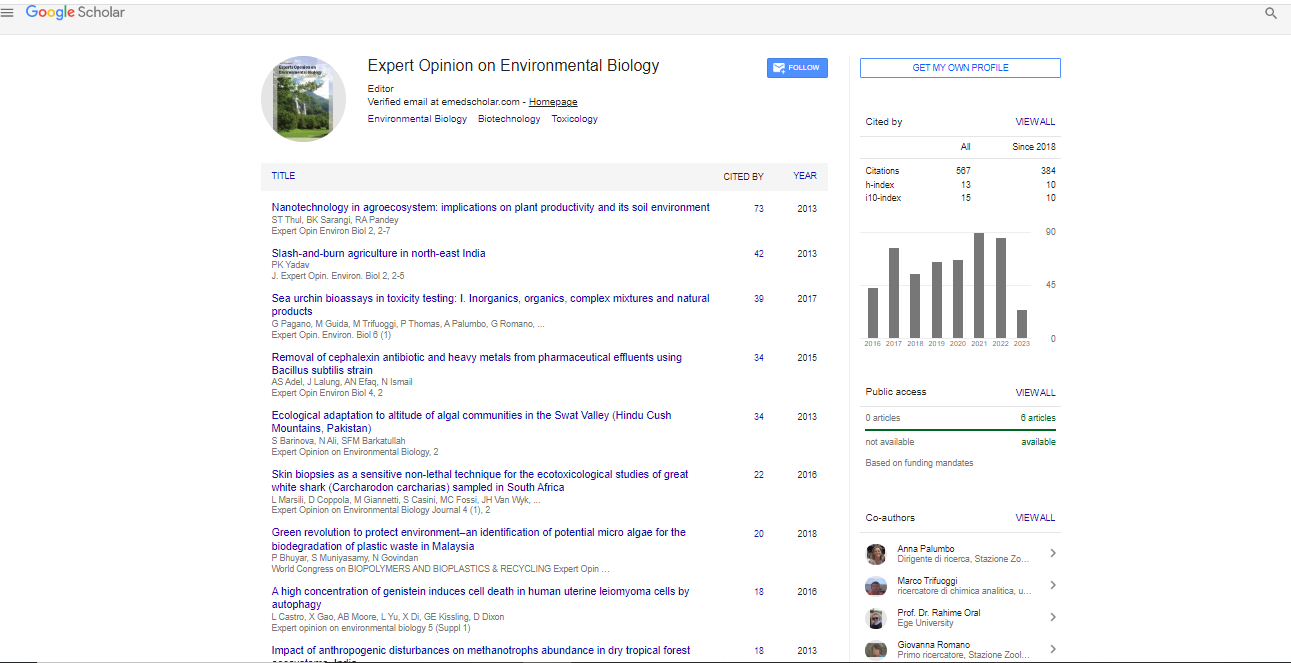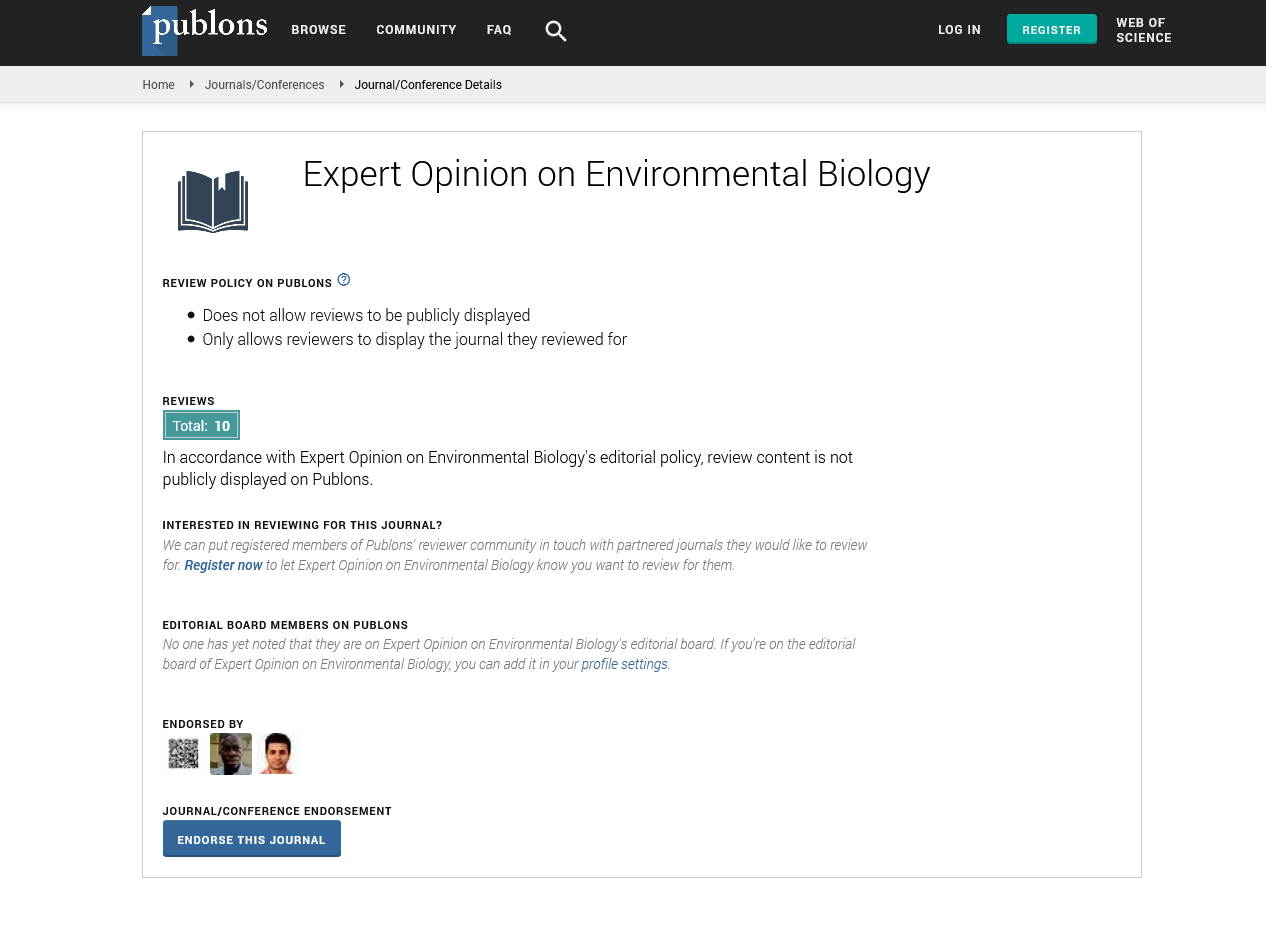Numerical modeling of climatic impact on the transition of toxic algae and toxins produced performance in eutrophic lake
Md. Nazrul Islam
Jahangirnagar University, Bangladesh
: Expert Opin Environ Biol
Abstract
A three dimensional hydrodynamic ecosystem and IMPACT mitigation coupled model was employed to simulate algae transition and toxin produced ability under the nutrients limited conditions and their mitigation strategies. Numerical simulation was carried out for the four years of the period 2005-2009. Algae have shifted seasonally and annually between 2005 and 2009, between three major algal: Microcystis spp., Planktothrix spp., and Cyclotella spp. The model reproduced well the transitions of dominant algae in the four years by calibrating ecological parameters. The biomass of Planktothrix spp. suddenly increased in the summer of 2008, and Planktothrix spp. became the dominant species. Longer periods of stratification, lower concentration of dissolved oxygen, and higher concentration of dissolved nitrogen were observed in 2008, while the sudden increase in Planktothrix spp. biomass in 2008. It was also found that the toxin production is made by Microcystis spp., and is proportional to the growth of algae, while it depends on whether phosphorus or nitrogen limits the algal growth. The toxin remains in the cell for respiration. Harmful algae toxin is released with extracellular release and mortality, and advects and diffuses with the surrounding current and turbulence. The degradation of toxin was taken into account by the decay coefficient which crosses the concentration of toxin. Numerical simulation was also tried under the assumption that phosphorus or nitrogen always limits the algal growth. Harmful algae bloom is generally the result of two major factors natural processes and human interferences. Both factors have an extreme influence on the generation of cyanobacteria toxins within aquatic ecosystems. To address these factors, we propose two concepts for mitigation. The first concept is intended for examining the natural process of toxin production behavior within the lake and the second concept is used for evaluating inflow of wastes and nutrients from human activities that form toxins. This study examined IMPACT (Integrating Mitigation Policies for Aquatic Cyanobacteria Toxin) model for diminution strategies of harmful algal blooms and their toxins. The findings suggest that successful mitigation of cyanobacteria toxins is highly dependent on multi-functional, multi-stakeholder involvement, and relevant intergovernmental policy. Without integrating approaches among different stakeholders, diverse socioeconomic activists, local-national policymakers and effective policy measures, prevention of cyanobacteria toxin production within lakes becomes extremely complex and difficult. The proposed IMPACT model could be a decision framework for identifying suitable policies that mitigate cyanobacteria impacts.
Biography
Md. Nazrul Islam is an Assistant Professor, Department of Geography and Environment, Jahangirnagar University, Savar, Bangladesh. He has received his BSc and MSc degrees in Geography and Environment from the same department. He also earned partial credit on Masters of Environmental Sciences, Wageningen University, The Netherlands. He did his PhD at Graduate School of Engineering from the University of Tokyo, Japan. Currently, he is continuing as a prestigious Postdoctoral research fellow in the University of Tokyo, Japan under Japan Society for the Promotion of Science (JSPS). He is the author of more than 40 international peer-reviewed journals articles and 10 books on climate change impact on fresh and marine ecosystem. He is presently launching a journal as Founder and Editor-in-Chief of the Springer journal “Modeling Earth Systems and Environment”. Recently, he received 3rd Biennial, 2013 the ‘Best Young Researcher Award’ by the authority of International Society of Ecological Modeling (ISEM) for excellent contribution to the Ecological Modeling fields. His fields of interest are environmental modeling on climate change and aquatic ecosystems.
Email: islam009@iis.u-tokyo.ac.jp
 Spanish
Spanish  Chinese
Chinese  Russian
Russian  German
German  French
French  Japanese
Japanese  Portuguese
Portuguese  Hindi
Hindi 
